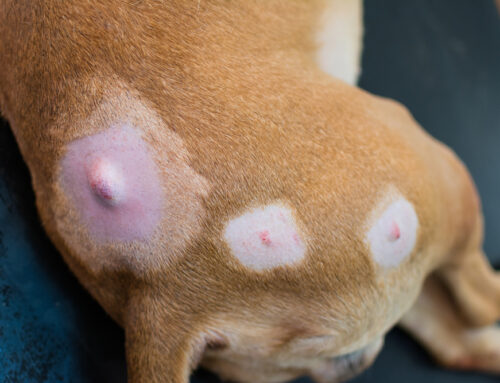Periodontal disease (i.e., periodontitis) is the most commonly diagnosed disease in cats and dogs, but many pet owners remain unaware of this condition. Although you focus on your pet’s physical health, you may not know their dental health is also extremely important. Because pets’ dental health issues often go under the radar, our Oliver Animal Hospital team describes periodontal disease signs and the condition’s prevention.
Periodontal disease in pets explained
Oral bacteria can flourish in your pet’s mouth for some time before the disease’s first sign—smelly breath—emerges. Periodontal disease is caused by plaque and tartar accumulation, which ushers in harmful bacteria. As the pervasive bacteria infect your pet’s mouth, they may experience tooth and bone loss, chronic pain, and gum erosion. Eventually, these noxious bacteria can circulate throughout your pet’s bloodstream, making their way to the heart, kidneys, and liver. Periodontal disease is not only an oral disease but one that can affect the entire body.
What causes periodontitis in pets?
If not removed, bacteria in your dog’s or cat’s mouth eventually form plaque. After plaque accumulates for a few days, the substance mineralizes and turns into calculus (i.e., tarter), a hard buildup on the tooth’s enamel. When your pet’s mouth is filled with noxious bacteria, their immune system reacts and leads to some obvious dental disease signs (e.g., gum inflammation and bleeding, mouth odor). Factors that contribute to your pet’s dental disease risk include:
- Age — Senior pets are prone to dental disease because their teeth have experienced a lot of wear and tear over time, and often have received inadequate care such as daily toothbrushing.
- Lifestyle — Chewing and licking dirty toys, sticks, and other unclean items can increase a pet’s dental disease risk.
- Mouth structure — Certain breeds are prone to dental issues because of facial structure abnormalities, such as flat-faced (i.e., brachycephalic) breeds and small breeds who have small mouths and, therefore, overcrowded teeth.
- Inadequate oral hygiene — Pets’ major dental disease risk factor is poor oral hygiene. Some dog’s or cat’s teeth have never or rarely been brushed and professionally cleaned.
Periodontal disease signs in pets
Pets usually hide their pain until a disease becomes advanced. You will likely have difficulty noticing your pet has gum disease until their discomfort signs become obvious. Your pet may have periodontal disease if they exhibit these signs:
- Bad breath (i.e., halitosis) — One of the most obvious periodontal disease signs in dogs and cats is persistent bad breath. The odor is often described as foul or fishy and is caused by the bacteria present in their mouth.
- Gum inflammation — Healthy gums should be light-medium pink in hue and not bleed. The gums of a pet who has periodontal disease may appear red and swollen, and be tender to the touch. In advanced periodontal disease cases, the tooth roots may be exposed.
- Yellow- or brown-stained teeth — Tartar buildup on the teeth is periodontal disease’s hallmark sign and appears as a yellow or brown deposit along the gumline.
- Difficulty eating or dropping food — Pets with periodontal disease may experience pain or discomfort while eating. They may chew on one side of the mouth or avoid hard food altogether. In a severe case, tooth loss may cause an affected pet to be unable to grasp and chew food properly.
- Drooling — Some dogs drool naturally, but excessive drooling (i.e., hypersalivation) can occur in pets with advanced periodontal disease.
- Loose, broken, or missing teeth — As dental disease progresses, the condition can loosen the teeth or cause them to fall out.
- Behavior changes— If a pet is in pain, they may exhibit behavior changes such as irritability, reluctance to be touched around the mouth, or avoiding their usual activities. Some pets may also paw at their mouth or rub their face against furniture to alleviate discomfort, while cats often hide.
How to prevent periodontal disease in pets

Prevention is your strongest ally in the fight against periodontal disease in your dog or cat. To help keep your pet’s teeth and gums healthy, follow these tips:
- Keep your pet’s regular wellness appointments, so our team can track any changes to their oral health and recommend treatment when needed.
- Feed your pet a minimally processed dental-enhancing diet, which your veterinarian can recommend.
- Give your pet a variety of dental chews, treats, and toys to minimize plaque buildup. These items enhance your pet’s mental health as well.
- Brush your four-legged pal’s teeth each day using a soft-bristled toothbrush and pet-safe toothpaste.
By staying vigilant and addressing your furry pal’s periodontal disease signs promptly, you help ensure your pet maintains a healthy and pain-free smile for years to come. Schedule your pet’s regular wellness exam, which includes an oral health assessment, with our Oliver Animal Hospital team.








Leave A Comment